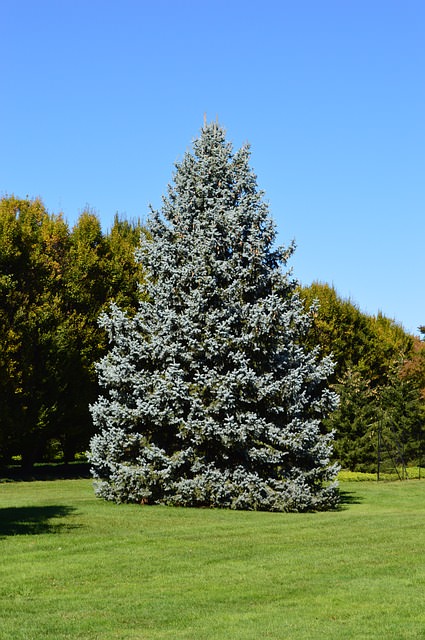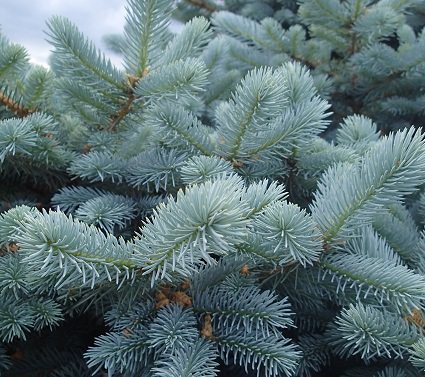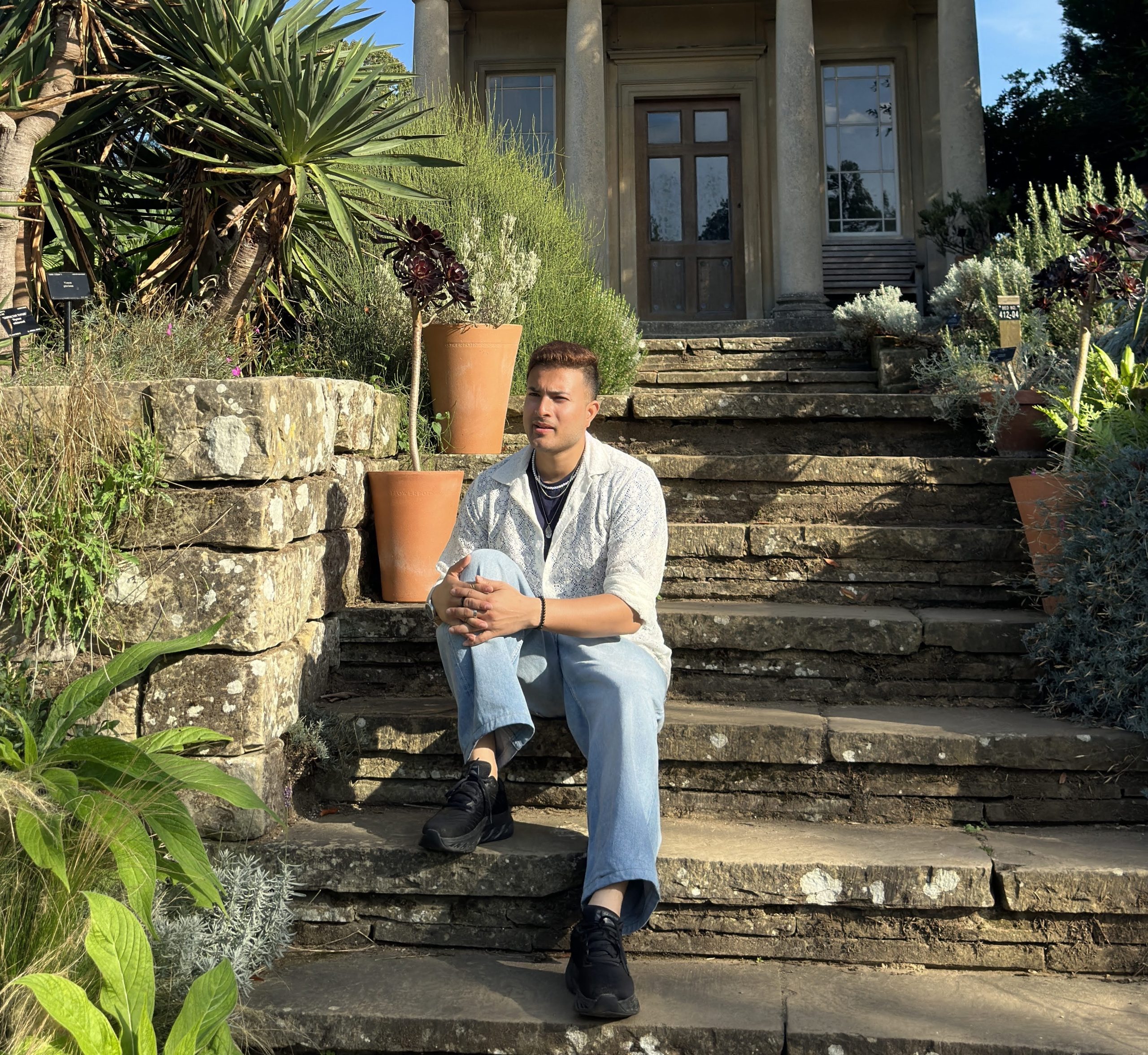Planting blue spruce tree is rewarding; it is an attractive native American conifer, read below to know more about blue spruce care and growing.
Colorado Blue Spruce (Picea pungens) is a beautiful native American conifer. This extremely rustic silvery blue tree reaches the height of 9 – 21 m (30-70 ft) in its region of origin. Nice bluish green color, accentuated by the sharply pointed foliage makes it a perfect conifer for open landscapes and large backyards. Dwarf forms of blue spruce are also available that reaches only between 1.5 to 4.5 m (5-15 ft) tall and are suitable for small gardens, patios, and terraces.
This pyramidal conifer has a habit of growing slowly. Its persistent and fragrant needle-like bluish green foliage are densely distributed around the reddish gray twigs. These needles are stiff and sharp.
USDA Hardiness Zones — 3 – 8
Difficulty — Easy
Other Names — Blue Spruce, Green Spruce, White Spruce, Colorado Spruce or Colorado Blue Spruce and Picea Pungens.
Propagation and Planting Blue Spruce
Blue spruce is usually propagated by cuttings, graftings, and seeds. Blue spruce cuttings are collected, preferably in the morning from vigorous branches. These cuttings should be dipped in a rooting hormone before planting in containers in a mixture of peat and sand. After planting keep the cuttings in a bright spot and keep the growing medium moist. These cuttings take a long time to show signs of growth, and you must wait several months, and the success rate is also poor. Once the cuttings show growth, plant them in the right place. Air layering of the blue spruce tree is also possible.
Only mature blue spruce trees produce the cones. These cones drop their seeds in spring. Blue spruce seeds require a considerable period of light to germinate: 14 to 16 hours per day. If the length of light falls below 12 hours a day, they become dormant. Seedling Growth of blue spruce is also very slow, and you need to be patient.
If you are planting a blue spruce tree, our recommendation is to buy a plant from nursery so that you’ll not have to wait for that much long.
Position
Planting a blue spruce tree on location in moist soil with full sun to light shade is optimal. However, blue spruce trees can tolerate less than perfect conditions but growing them in a heavily polluted area can affect the blue color coating of the needles.
Blue Spruce Care
Blue spruce tree care involves a few requirements and slight maintenance to keep it healthy and vigorous.
Soil
Soil should be well-drained and rich in organic matter. You can add compost while planting. It is also required to keep the soil slightly moist when the plant is young as mature trees can tolerate dry soil.
Fertilizer
Conifer fertilizer is expensive (like 30-15-15 with minor elements) but very effective especially if your soil is sandy. These fertilizers will give all the nutrients and help the tree growing vigorously with a nice look and much denser foliage.
Water
Regular watering is required for the young plant. Once established, watering must be abundant but infrequent only during the dry spells. All conifers need a vital water supply in the fall before frost to accumulate reserves; this allows them to withstand the sun’s rays in March when plants still have their feet in the gel, causing called spring burn.
Weeds
Planting area around this magnificent conifer should be kept clean and weed free, especially when the plant is not well established. A good thick cedar mulch or of other organic matter is sufficient to prevent annual weeds.
Pruning
Do not prune these trees. They do best when their branches are allowed to grow all the way to the ground.
Pests and Diseases
Use a magnifying glass to examine the needles of your blue spruce for signs of Rhizosphaera needle cast (Rhizosphaera kalkhoffii), a fungus that causes needle cast disease. It pushes through the stomata of the affected needles and looks like fuzzy black spots. If not treated, blue spruce needles turn purple to brown and eventually fall. Although, the fungus doesn’t usually kill the tree. Besides this blue spruce trees are also susceptible to white pine weevils.



My tree was transplanted by me from PA to an old ho use in NJ. It is gorgeous and perfect. I do have invading day lillies around some of the tree that faces all day sun. i think I should remove these this spring since reading your article. I will begin deep watering now for the coming winter and hopefully get some fertilizer before spring. It has always been the most important part of the front yard and is huge! My birds love to hide in the top branches.
I planted a Blue Spruce last year at Christmas time and this fall it died. I don’t know what killed it but all the needles turned brown and it was dead in a month. Before that it had new shoots on each limb and really looked like it was going to flourish.
Mine is doing the same thing, needle drop only on one side so far. Nursery says water more and spray for spider mites. Did you ever find out why your tree died? Still hope to save mine, we’ll see.
We had the same problem. We are in Utah. There are three main problems we face here with spruce. The one that killed our tree was fungus. A spruce specific fungicide has worked nicely for us since we planted our new one. Two other common problems are mites and borers. There are easily accessible products on the market at your local hardware or IFA for all three of these problems. You will have to be diligent in application and follow manufacturer directions.
I have a blue spruce that has been turning red for a couple years now. We replanted the tree from a nursery when it was only a couple feet tall. It is now well over 10’ (I’m a bad judge of measurement? When it first started doing it, we never worried because there were beautiful bluish green needles growing out on the “damaged” branches. Unfortunately it is getting worse and hubby wants to cut it down this year. Can it be fixed so that I don’t lose the reddish branches, or can I plant a cutting from it?
My trees are planted in soil with a high clay content in Wisconsin, will they survive? The trees are thinning from the bottom up. What causes this? Can it be prevented?
Dying from the bottom up is likely a needlecast fungus. I’ve had good luck fertilizing and treating mine in Northern IL with a fungicide (Daconil) for the past two years and it seems to be coming back and retaining its needles now. Good luck!
Question:
We are about to plant (5) Colorado Blue Spruce and would like to know if the wire-form surrounding the root ball should be removed?
Extremely high waters for two consecutive years suffocated the Colorado Blue Spruce we planted approximately (5) years ago, so we are raising the grade to prevent a re-occurrence.
When removing the dead Colorado Blue Spruce, we found that the root balls were still in tact and being held together by the wire-forms they were shipped in. It appeared to me that the wire-forms may have hindered a healthy root development and I’m wondering if they should have been removed or at least opened with wire cutters once the root ball was lowered into place?
Thank you in advance for comments.
Definitely take out the wire!
I’m no pro but I’ve planted a lot of trees (500+. I dig the hole. Fill it full twice with water. Let it drain. Spray root ball gently. Remove wire and burlap. Pull and separate root ball slightly. Put it in hole fill with dirt. Soak it with water. Finish the top dirt into a dish shape to hold water when watering. The weeds should germinate within a week or so. Manually weed them out then light cover of mulch. Don’t over water and don’t let it dry out too much.
My blue spruce has un even branch growth. It has some branches that grown very nice and then there are branches under those that do not grow out as far thus cause a weird shape to the tree, What can I do ?
salt an sand from the road arekilling the tree on the road sidethe yard side is good.gypsey mothes did damagealso 2 years ago any ideas
I rooted 4 Blue Spruce cuttings this past fall, and they are currently in 4-inch clay pots. For the rest of winter, I was thinking of moving them from a small (and rather cheap) greenhouse outdoors to a massive bright window indoors. They only have about 3-4 small roots right now. Will they make it by sunny window indoors, or should I leave them outside?
Help…. I have had a second blue spruce planted… the first died quickly I feel it was a poor tree to begin with however now I have a second one that was extremely healthy when planted the needles at the end of the branches are starting to change colors I am concerned that maybe my soil is too wet for this type of tree if not that could it be in shock from being planet it’s been in the ground for about two months now what can I do to help this survive
Pls, anybody can answer? I have a weeping Blue Spruce “Procumbens” . Can I train it to vertical form, instead of spreading? I do not have much space for it.
Also, I d like to plant it in wooden barrel container to keep it in a most sunny corner of my backyard.
Thank you, I will appreciate any help
I have started 63 Blue Spruce trees from seed in April and are sprouted in their own containers. I have them in my house under a grow light for 18 hours a day. How long/big do I have to wait until I plant them outside? We get harsh winters with a couple feet of snow that doesn’t melt until mid spring
I planted a small Blue Diamond blue spruce. Sometimes the branches droop, particularly at the top. I found that when I gave it a good water the branches would stand tall again…until today. It started to droop so I watered it. Now it is drooping even more. I planted it 3 weeks ago with Mykes. Then 2 weeks later I fertilized it with the right type of fertilizer. Since then I’ve just watered it. I really love this little tree and don’t want to lose it. I’m in Canada. Similar conditions to North Dakota.
Paula
I planted a small Blue Diamond blue spruce. Sometimes the branches droop, particularly at the top. I found that when I gave it a good water the branches would stand tall again…until today. It started to droop so I watered it. Now it is drooping even more. I planted it 3 weeks ago with Mykes. Then 2 weeks later I fertilized it with the right type of fertilizer. Since then I’ve just watered it. I really love this little tree and don’t want to lose it. I’m in Canada. Similar conditions to North Dakota.
I have a tall blue spruce whose lower branches have become scarce and bare, with needles only on the ends. If I prune those back (like pinching back a garden plant), will they put out new, thicker growth?
That sounds like a needle cast fungus. Research treatment with a fungicide for needlecast fungus. What happens is the tree will only retain one years worth of needles on the lower effected branches, versus retaining 5 or more years worth of needles on health branches.
great article